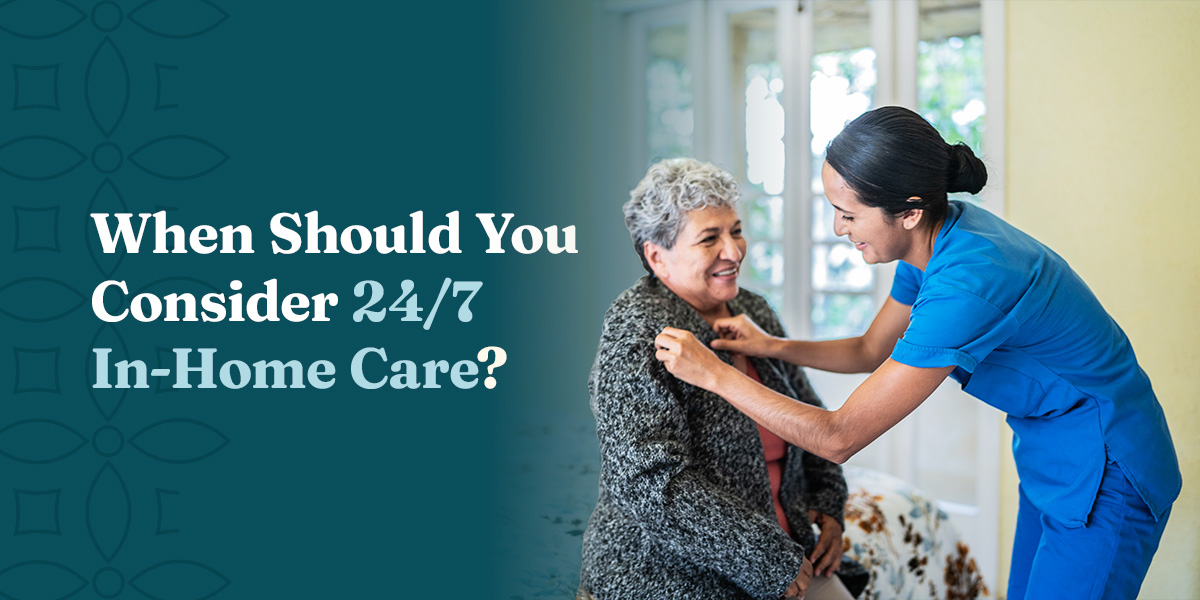When Should You Consider 24/7 In-Home Care?

Sometimes, you’ve done all you can for a family member, and it’s time to look for additional help to give them the care they need and deserve. When searching for a care plan that ensures your relative receives the best care possible, 24-hour in-home care may be the solution.
Twenty-four-hour in-home care provides individuals with the professional help they need while letting them stay in the comfort of their homes. Make an informed decision about the care your family member receives by learning what signs to look for when in-home care is an option and discovering how to get it for your relative.
Signs Your Relative Would Benefit From 24/7 Care
Older adults can benefit from additional support in their day-to-day lives. While some only require a little assistance, others may need more due to certain conditions they have or difficulties they experience in their daily lives. Some things that require a person to have 24-hour home care include:
- Difficulties completing daily living activities
- Declines in cognitive function
- Frequent accidents or falls
- Lack of mobility or decreased physical function
Additionally, a behavior change can indicate an individual may need 24/7 in-home care. Individuals who have become more aggressive toward themselves or others or have wandering issues would benefit from constant supervision. Also, an individual who suddenly starts isolating themself or neglecting their overall wellness would benefit from having around-the-clock care.
Common Conditions That Require 24/7 Home Care
While older adults with daily living difficulties can take advantage of 24-hour care, some specific conditions may make getting this care even more beneficial. Individuals with the following conditions may require 24/7 in-home care:
- Dementia
- Parkinson’s disease
- Alzheimer’s
- Physical disabilities
- Mental health conditions
- Post-surgery, -hospitalization or -rehab situations
Who Qualifies for 24/7 In-Home Care?
Adults over the age of 60 who live at home and have personal care or home management needs may qualify for 24/7 in-home care, depending on the severity of their situation. Often, individuals who require the service need it because they are incapable of caring for themselves or they can no longer complete multiple tasks. Having a professional caregiver provides much-appreciated help and assurance for your family member.
You may wonder if your parent needs 24/7 home care. Besides your judgment and experience in helping your parent, the ultimate decision for care is based upon the expertise of your parent’s health care professionals, like their doctors. Their support and diagnosis will determine if your parent qualifies for 24/7 in-home care.
How to Get 24-Hour Care in the Home
When you decide 24/7 in-home care is the route to take to provide care for your relative, ensure you take the time to research and meet with different organizations to find programs that would work best for your parent or relative.
Corewood Care is committed to helping older adults age gracefully at home while getting the care they need. We provide comprehensive 24/7 in-home care services to make sure your family member receives solutions that keep them safe and comfortable.
We serve older adults throughout the District of Columbia, Virginia and Maryland.
Get Around-the-Clock In-Home Care for Your Relative With Corewood Care
Corewood Care ensures your family member gets a high level of care, safety and support in the comfort of their own home. Get started with our services when you contact us for an in-home care assessment. We’ll determine if your family member would benefit from our 24/7 in-home care services and proceed from there to provide help for your relative.



